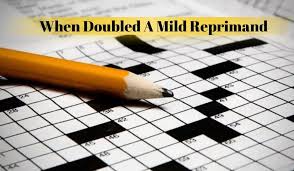Imagine a world where communication relies on rhythmic dots and dashes instead of spoken words. This is the fascinating realm of Morse code—a system that has transformed the way we send messages across vast distances. From its inception in the 1830s to its utilization in today’s technology, Morse code remains an intriguing method of communication.
But what exactly is a Morse code translator? How does it work, and why should you consider learning this timeless skill? Let’s embark on a journey through history, explore how this clever coding system functions, and discover modern-day applications. Whether you’re simply curious or looking to expand your skill set, understanding Morse code can open up new avenues for connection and creativity.
The History of Morse Code
Morse Code has its roots in the early 19th century, emerging as a revolutionary communication method. Samuel Morse and Alfred Vail developed it around 1836 to transmit messages via telegraph.
Initially designed for dots and dashes, this code transformed how information traveled over distances. Each letter of the alphabet corresponds to a unique pattern, allowing for efficient transmission.
The first official message sent using Morse Code was “What hath God wrought?” It marked a significant moment in history and showcased the potential of electronic communication.
As time progressed, Morse Code became essential during wars and maritime operations. Its simplicity made it ideal for emergency signals, ensuring timely rescue efforts at sea.
Today, while technology has advanced significantly, understanding its historical significance is crucial for appreciating modern communication methods.
How Morse Code Works
Morse Code translates letters and numbers into a series of dots and dashes. Each character has its own unique combination.
A dot represents a short signal, while a dash denotes a longer one. For instance, the letter “A” is shown as “.-” and “B” as “-…”.
Spaces between signals create gaps that help distinguish characters. A space separating letters is three times longer than the duration of a dot. This structure allows for efficient communication even under challenging conditions.
Originally designed for telegraph systems, Morse Code remains relevant today in various formats like sound, light signals, or visual displays. Its simplicity facilitates quick understanding across different mediums.
Understanding these basics can enhance one’s ability to use or translate messages seamlessly with tools available online or through mobile apps dedicated to Morse Code translation.
The Use of Morse Code in Modern Times
Morse code may seem like a relic of the past, yet it still finds relevance today. It has carved out a niche in various fields, particularly in emergency signaling. When voice communication fails or is impossible, Morse code can be transmitted via light signals or sound.
Amateur radio enthusiasts often use Morse code for its simplicity and effectiveness over long distances. Even with advancements in technology, many find joy in mastering this timeless skill.
Additionally, some assistive technologies employ Morse code to empower individuals with disabilities. For instance, users can communicate through simple switches that translate their movements into coded messages.
In the world of cybersecurity and digital communications, encoding data using Morse patterns offers an intriguing layer of security against potential breaches. The versatility and adaptability of Morse code ensure it remains part of our communication toolkit even now.
Learning and Using a Morse Code Translator
Learning to use a Morse Code translator can be both fun and practical. With just a few basic rules, you can start translating messages quickly.
Most translators are available as apps or online tools. They allow you to input text and instantly receive the equivalent in dots and dashes. This immediate feedback makes it easy to grasp how letters convert into Morse code.
Practicing with these tools enhances your skills over time. Try sending simple texts like “Hello” or “SOS.” You will become familiar with the rhythm of the code.
For those who prefer hands-on learning, consider using flashcards. Write down letters on one side and their Morse counterparts on the other. This method reinforces memory through repetition.
Communicating in Morse adds an element of intrigue too! Consider sharing your new knowledge with friends or family for some light-hearted practice sessions together.
Advantages and Limitations of Morse Code
Morse Code offers several advantages that make it an enduring communication tool. Its simplicity is one of its key strengths. Transmitting messages using just dots and dashes allows for clarity, even in noisy environments. This makes it especially useful in emergencies.
Another benefit is its versatility; Morse Code can be communicated through various mediums—sound, light, or visual signals. This adaptability means you can send a message in ways that suit the situation best.
However, there are limitations to consider as well. The learning curve can be steep for some people. Mastering the code requires practice and dedication.
Additionally, while it’s effective for short messages or emergency signals, long communications become cumbersome and time-consuming to encode and decode. In today’s fast-paced world, those delays may not fit with our instant messaging expectations.
Conclusion: Why You Should Learn Morse Code Today
Morse Code holds a unique place in the world of communication. Learning it can open up new avenues for understanding and using technology, especially in fields like emergency services and amateur radio. As digital communication continues to evolve, Morse Code remains relevant.
Engaging with this timeless language can sharpen your cognitive skills. It encourages critical thinking and enhances memory retention through practice. Plus, it’s an impressive skill that can set you apart.
Using a Morse Code translator makes learning easier than ever. These tools allow you to quickly convert text into dots and dashes, making it accessible for beginners or anyone looking to refresh their knowledge.
Understanding Morse Code connects you with history while providing practical benefits today. It’s not just about nostalgia; it’s about adding value to your skillset in our fast-paced world.
Whether you’re curious about its historical significance or interested in practical applications, diving into Morse Code is worthwhile. So why not explore? You may find more meaning behind those simple dots and dashes than you’d expect!



